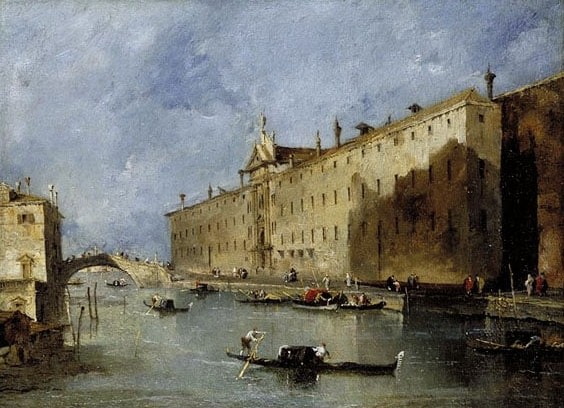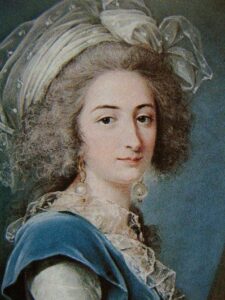
The Rio dei Mendicanti (Ospedale on the right) by Francesco Guardi c. 1780-90, courtesy York Museums and Gallery Trust
Our Italian programme begins with the music of a courageous and determined eighteenth century woman. Maddalena Lombardini’s impoverished parents took her to audition for a place at the Ospedale di San Lazzaro dei Mendicanti, one of Venice’s charitable institutions for the poor, sick and orphaned, which also served as educational establishments. In particular, musical skills were nurtured, presumably with the expectation of the pupils’ involvement in the music in the chapel there. She was accepted.
Lombardini was clearly a talented young musician and managed to get permission to have violin lessons with Tartini, violinist and musical theorist, who lived in Padua. She studied composition with Ferdinando Bertoni, choirmaster at the Ospedale.
Her sights were soon set beyond the walls of the Ospedale. In order to be released from its confines she needed a dowry. She married another violinist composer, Lodovico Sirmen, and they left to tour Europe.
They performed to acclaim in Turin, Paris and London, often playing their own compositions – concertos, duets, and no doubt quartets. A set of six quartets (we are playing No 6) published in Paris in 1769 was considered to have been co-written by the couple but more recently the authorship has been more clearly identified as being that of Maddalena herself. On the cusp of the early classical style that was being developed by Haydn, and contemporary with his earliest string quartets, there is still a flavour in her music of the courtly airs and graces that she would have encountered on her visits to the cultural capitals of Europe.
Despite the early flowering of her talent and fame, she ultimately got rather left behind. Her violin playing became to be seen as old fashioned. She turned to singing as a career, even performing as far away as St Petersburg but this new musical direction didn’t really work out and she subsequently returned to Venice with her travelling companion, Giuseppe Terzi, a priest – this arrangement was evidently not uncommon at the time. (Her husband Lodovico had long since left her, taking their daughter Alessandra to Ravenna, where he had employment and became associated with Countess Zerletti.) In 1795 Maddalena and Giuseppe jointly adopted a child. The couple must have been close, to say the least. One wonders what Maddalena’s inner life was, balancing her musical aspirations, cosmopolitan experiences and maternal feelings.
It is very likely that the young Maddalena gazed at Tintoretto’s painting, St Ursula and the Eleven Thousand Virgins, which was installed in the chapel at the Ospedale. It is a very dramatic picture, depicting a scene from the life of the patron saint of schoolgirls, St Ursula, that could almost be the inspiration for a film scene. In particular, the eye is drawn to the huge ships in the background and of course that extraordinary weightless figure flying through the air. There is so much movement in it, so much travelling.
I think it would be a stretch of the imagination to interpret this painting as in any way feminist but perhaps there is an energy in it that is reflected in the impetus of Maddalena’s desire to break out of the Ospedale, travel far and wide and express her feelings through her music.


Recent Comments